StarDrive – Review
by Stu
|
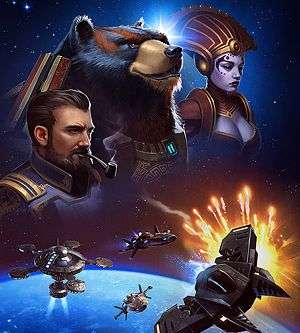 When a boxed copy of StarDrive unexpectedly arrived at GLHQ I was more than happy to barge fellow writers aside to sink my teeth into a 4X space strategy title. I’d recently returned to modern PC gaming after my ancient rig (which had been on borrowed time for a while) finally gave up on me, thus providing an excuse to spend money that I don’t have – praise be for overdrafts, am I right?!
When a boxed copy of StarDrive unexpectedly arrived at GLHQ I was more than happy to barge fellow writers aside to sink my teeth into a 4X space strategy title. I’d recently returned to modern PC gaming after my ancient rig (which had been on borrowed time for a while) finally gave up on me, thus providing an excuse to spend money that I don’t have – praise be for overdrafts, am I right?!
After doing a little reading around whilst waiting for delivery it became apparent that this had been in beta for a while and, like many recent ‘KickStarter’ funded games on the PC, seems to be one that is released in a ‘mostly finished state’ but with more developments added as time goes on. Being primarily a console gamer I’m still getting my head around buying a potentially unfinished product with no real guarantee it’ll be made better, but then I’m sure those cynical few amongst you will point out that current generation console games are usually rushed with day one patches; fair point, but usually at least all of the features are in place…
StarDrive has no storyline, no plot, or major characters – but this isn’t unusual for the 4X strategy genre where you command an entire race that should eventually span the galaxies. You are able to select a race from a fairly forgettable list that covers the usual stuff: Humans – check, Robots – check, Insect Race – check, Space Bears – check… wait, what? If you’ve heard anything about StarDrive at all then it is likely the inclusion of Space Bears, as well as Space Owls and Space Wolves (not the Warhammer 40K variety by the way) but they didn’t seem to garner the same level of excitement.
Each race has a description, most of which is a copy and paste job with many races sharing the same ‘unremarkable diets’ sentence, but the portraits are varied and fun to view with definite nods to various sci-fi and fantasy inspirations. The Space Bears, or Kulrathi, are obviously a slight nod to the Space Cats of Wing Commander, or the Kilrathi as I knew them. Then you have the GladOS-like Opteris, the Cthulhu-like Rayleh and many more.
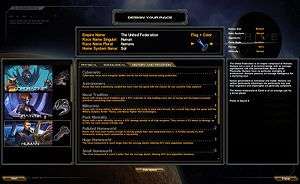 Ultimately though, the choice of race is pretty much redundant (for the player) as you can customise your race completely via the traits system. Want to play as human but can’t be bothered with worrying about feeding your populace? No problem, select the cybernetic trait and all of your food woes go away! You have a pool of eight points to select various traits (each valued between one to four points) and you can gain more points by selecting negative traits too. Blindness – for instance – will weaken your hit rate with projectile weapons but free up three points to use elsewhere.
Ultimately though, the choice of race is pretty much redundant (for the player) as you can customise your race completely via the traits system. Want to play as human but can’t be bothered with worrying about feeding your populace? No problem, select the cybernetic trait and all of your food woes go away! You have a pool of eight points to select various traits (each valued between one to four points) and you can gain more points by selecting negative traits too. Blindness – for instance – will weaken your hit rate with projectile weapons but free up three points to use elsewhere.
You can rename your Race, Empire and Homeworld too before you even set foot inside the actual meat of the experience. If there is one aspect of StarDrive that will consistently show throughout it is the level of customisation; Zero Sum Games went all out to provide customisation options far beyond anything I’ve previously encountered in other 4X titles, such as Sins of a Solar Empire.
From the same launch menu as your starting race attributes you can also alter the rest of the game’s parameters. Options for size of galaxy (and density of planets), number of opponents and difficulty are all present to allow you an experience that’s streamlined for ability level and time available. There is also an option to select the play mode but at the time of writing Sandbox is the only option. There is also currently no multiplayer functionality so it is just you versus the AI, meaning that it takes control of all opposing races and creates ‘personas’ for each of them, meaning that each play-through should vary and tactics against a certain race may not succeed the next time.
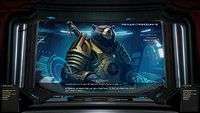 |
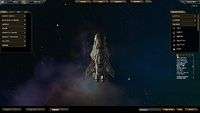 |
 |
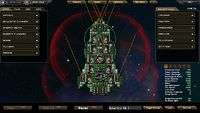 |
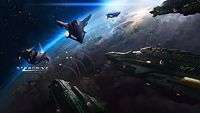 |
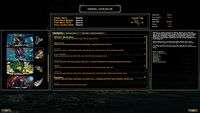 |
The manual gives a basic overview but getting dumped into something of this complexity with nothing more than a couple of tutorial videos and some text help topics to back you up can be very daunting. My first attempt lasted less than an hour before I was rushed and destroyed by an enemy race, and my second didn’t fare much better. Once I had mastered the art of slowing down or pausing (by default each ‘turn’ takes five seconds of real time) for some much needed breathing space, I was able to become much more efficient with the set-up for my galactic domination plans; as far as learning curves go, StarDrive has a fairly steep one.
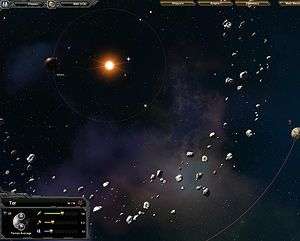 The user interface is minimalist with plenty of expanding components to grant more detail and options. Pop-up windows will be the mainstay of your StarDrive experience as you manage resources and research, watch planetary invasions unfold and apply newly researched technology to your ship blueprints.
The user interface is minimalist with plenty of expanding components to grant more detail and options. Pop-up windows will be the mainstay of your StarDrive experience as you manage resources and research, watch planetary invasions unfold and apply newly researched technology to your ship blueprints.
The UI aside, the more graphically beautiful element comes from the ships. As is standard fare for 4x strategies you can zoom in and out to your heart’s content. You can be checking out a fighter ship flying around and then zoom right out to a view encompassing multiple galaxies which, if you’re new to this type of title, can seem a little disorienting but anyone will quickly learn to appreciate the value such a feature adds to the experience.
The ship designs are varied from race to race, but in mass battles it is very difficult at times to work out quite what is going on due all the colourful beam weapons and missile payloads detonating on hulls. Thankfully, the mini-map colour codes all ships and, if selected, your ships also enjoy a coloured border for easy identification.
While a good attempt is made to fill space with pretty backgrounds of nebulæ, stars and other such delights, a lot of the time it is devoid of any real content. Other than your opponents there is never any risk from random wormholes forming, giant asteroids that need to be destroyed or the like. There are a few scattered ancient alien ships known as The Remnant but they are usually few and far between (and more than a match for any starting empire) and usually one occupied planet that does not belong to any faction. Ultimately it’s pretty sparse and lonely out there in the deepest, darkest reaches of space.
Having a fairly empty universe is probably a blessing, however, as most of the time you’ll be knee-deep in the menus and configuration screens of StarDrive. As any fledgling empire knows, you need to expand to survive and in order to do that you’ll need ships.
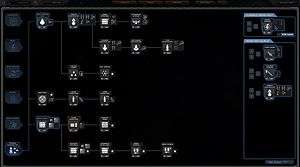 These come in a variety of shapes and sizes, from the tiny un-armed scouts through to huge dreadnoughts. Not all are built for military purposes; there are also freight ships and colony ships that are the backbone of any expansion plan, responsible for ferrying supplies and people to new worlds. Not everyone (myself included) enjoys babysitting trade runs manually and I was so happy when I was made aware of the AI options because, as with a number of things in StarDrive, you can let the AI manage your supply ships, including the building of new ones should the need arise.
These come in a variety of shapes and sizes, from the tiny un-armed scouts through to huge dreadnoughts. Not all are built for military purposes; there are also freight ships and colony ships that are the backbone of any expansion plan, responsible for ferrying supplies and people to new worlds. Not everyone (myself included) enjoys babysitting trade runs manually and I was so happy when I was made aware of the AI options because, as with a number of things in StarDrive, you can let the AI manage your supply ships, including the building of new ones should the need arise.
Combat ships can be manually directed but still rely on AI for most of the dogfighting. This can be customised to try and force a certain behaviour, for instance most fighters have forward-facing guns that makes the AI behaviour of trying to keep the front of the ship facing the enemy a tempting proposition – but really that is something that will also open the ship up to a pounding – while a strafing run behaviour may be better for more delicate ships. Ordinarily that would just be nice to have but because players have the freedom to customise any and all ships then it is necessary to be able to modify fighting behaviour to ensure that a gunboat bristling with weapons down each side isn’t made redundant, as default gunboat AI behaviour is a frontal attack pattern.
Ship customisation is a huge part of StarDrive and can be troublingly addictive to play with. You start off with basic plans based on the starting hull types available, but as you research and unlock different technology and hulls then it widens the opportunity for customising your space armada to your heart’s content. Although there are enforced areas of the ship for the placement of specific items (i.e. you can’t dump a warp engine at the front of a ship) you are still given a lot of scope for customisation. Each schematic you create can then be saved and production facilities can be instructed to mass-produce that model.
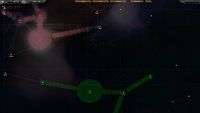 |
 |
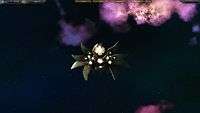 |
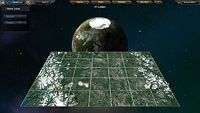 |
 |
 |
Another great feature is the retrofit option; if your research unlocks a new type of drive or improved weapons then you may wish to update a schematic, and once this is done you can then order existing ships back to base for a retrofit to bring them in-line with the new designs. This helps immeasurably in keeping continuity in your fleet and technology – there is nothing worse than heading into battle with an out of date fleet and getting cut down because none of your ships had been updated with energy shields.
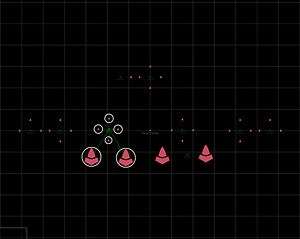 Sitting alongside the ship customisations is also the ability to create fleets. These have two purposes in StarDrive, the first of which will be familiar to any 4x or RTS player, and that is the ability to select a number of ships as a group in one quick click. The second purpose is one of the most useful I’ve seen in any RTS – the ability to replace destroyed units. When creating a fleet you can also determine the formation (and ships can move either as a formation or at best speed) by dragging individual ships (or ship plans) on to the formation canvas area. As with ship layouts you can save the formation for later use, but the best feature is being able to see the status of the fleet at a glance and place a build order with local shipyards to replace any missing ships or – if from plans rather than existing ships – build new ones.
Sitting alongside the ship customisations is also the ability to create fleets. These have two purposes in StarDrive, the first of which will be familiar to any 4x or RTS player, and that is the ability to select a number of ships as a group in one quick click. The second purpose is one of the most useful I’ve seen in any RTS – the ability to replace destroyed units. When creating a fleet you can also determine the formation (and ships can move either as a formation or at best speed) by dragging individual ships (or ship plans) on to the formation canvas area. As with ship layouts you can save the formation for later use, but the best feature is being able to see the status of the fleet at a glance and place a build order with local shipyards to replace any missing ships or – if from plans rather than existing ships – build new ones.
In order to maintain the constant supply of materials for your fleet creation you will first need your planets to have decent manufacturing capabilities, and planets you control can be customised via sliders to put more effort into food, production or research. Each planet can also be fixed to a preset or handed to the AI to manage – certain research paths will also help aid these three basic components that keep your empire growing, even going as far as to allow terra-forming.
Each planet also has a tactical view – a grid of squares that make up the planet’s surface. In this view you can place structures and perform actions with ground-based troops. Not all squares are available and you will need to advance research in order to build on blacked-out tiles. This view also has another purpose, as it is where land battles with take place should you or an enemy take a fight planetside. By default, land battles are managed by the AI, but this can be disabled and managed by the player. If all structures or enemy forces are removed from the planet then the attacking force takes control, and if you have an enemy planet that is not suitable for colonisation (perhaps a barren world occupied by cybernetic beings) then you can choose to take the scorched earth approach and bombard the planet from space. Fun times!
Research is managed by selecting a list of items to be prioritised from the appropriate menu; each tree can be selected from a tabbed area and choosing an individual item will provide you with details such as time needed to research topic, the results of the research (a new weapon/building/technology, etc) and some general explanatory text. Research time is measured in turns and multiple projects cannot be pursued concurrently (although you are able to pause and switch to another topic and then return to the original one later). Each turn takes five seconds of real-time by default and the amount of time taken is also heavily influenced by the research output of your empire.
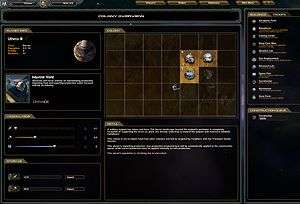 Everyone knows that science and military might does not always win the war; sometimes you need a diplomatic solution and StarDrive also has an interesting implementation for managing that aspect. Opponents will judge your race based on military prowess and trustworthiness – amongst other things – and that will determine how they react to your diplomatic advances. There are a few ways to anger or befriend other empires besides combat; you could start with a trade agreement which, over time, will earn you money and respect, or you can offer colonies, technology or location information for quicker results.
Everyone knows that science and military might does not always win the war; sometimes you need a diplomatic solution and StarDrive also has an interesting implementation for managing that aspect. Opponents will judge your race based on military prowess and trustworthiness – amongst other things – and that will determine how they react to your diplomatic advances. There are a few ways to anger or befriend other empires besides combat; you could start with a trade agreement which, over time, will earn you money and respect, or you can offer colonies, technology or location information for quicker results.
I was glad to see that the seedier side of diplomacy is also present and you are able to train spies. As well as the traditional espionage and sabotage roles, these agents are also your defense against the spies of other races so even if diplomacy is not something you want to engage in, it is probably worth training a couple up to stop enemies from plundering your research at will (and the AI will do so!).
Spies are not available for defensive purposes if in training or on a mission, so having a few at once may be a wise strategy for most to take. As your secret agents complete training (which in itself is not guaranteed, with a few aspiring James Bonds perishing during the training exercises) they will level up and be able to tackle the more advanced missions available such as stealing tech and sabotaging production.
 |
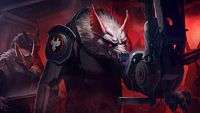 |
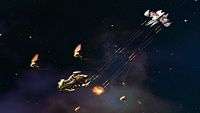 |
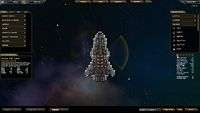 |
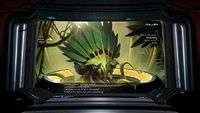 |
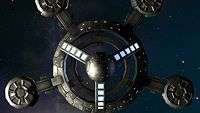 |
Although potentially lucrative, if you are falling behind with research or reaching a stalemate in a war, the consequences of being discovered can be dire. It didn’t take much for a friendly empire to get very angry and declare war due to my nefarious spying deeds, but it can also mean the loss of an agent and all of those turns spent training them should they be discovered.
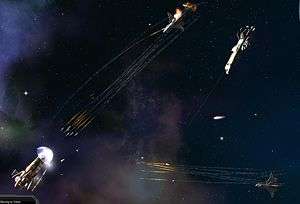 The other side of the diplomacy coin is a much simpler beast, as you can initiate contact with any races you may have bumped into on your travels around the cosmos and the options are fairly limited. You can offer requests (trade agreement, non-aggression pact or alliance), declare war or trade for information directly. You can also apply a tone of voice for a pleading request for a non-aggression pact or an aggressive request for an alliance. The tone will definitely affect how the other race responds and appearing submissive and offering up a present could avoid war against an aggressive faction until you’ve fully prepped an armada.
The other side of the diplomacy coin is a much simpler beast, as you can initiate contact with any races you may have bumped into on your travels around the cosmos and the options are fairly limited. You can offer requests (trade agreement, non-aggression pact or alliance), declare war or trade for information directly. You can also apply a tone of voice for a pleading request for a non-aggression pact or an aggressive request for an alliance. The tone will definitely affect how the other race responds and appearing submissive and offering up a present could avoid war against an aggressive faction until you’ve fully prepped an armada.
Ultimately, it all still comes down to wiping everything out or having races bend their knees to your rule and join a ‘federation’, but it’s a shame that with the diplomacy and resource management systems being so robust that other victory conditions cannot be defined. Although not strictly part of the game out of the box, StarDrive has already attracted a modding community that can enhance its longevity – everything from ship skins to gameplay tweaks can be found and well worth checking out if you have invested in the vanilla game. Considering that StarDrive is the effort of a single developer you cannot deny that it stands up well against any other games in the 4x genre and if the game continues to receive enhancements then it should be a staple in every strategists’ collection.
Pros- Customisation adds a new tactical layer and hands the player freedom to experiment
- AI management options for the more mundane tasks such as ferrying people and supplies to new worlds removes a lot of potential tedium
- Has everything you’d expect from a 4x strategy
- An active modding community
- No multiplayer modes could be an issue for some
- Very harsh learning curve for beginners
- No variance on winning conditions can make it a little dull and repetitive
I thoroughly enjoyed tinkering about with StarDrive’s various facets and for those who like a challenge then the harder AI levels will deliver. The problem with StarDrive is the longevity; with no side missions, no alternate victory conditions and no multiplayer then it may not take many players long to feel like the experience is too repetitive.
I found the graphics, sound and general polish to be good and despite there being complaints of crashing, freezing and poor performance in larger battles on the forums, I experienced none of those issues myself. There is always room for improvement and a lot of the sound and graphical elements are passable rather than breathtaking, likewise updates to the tutorials, text and some UI elements could improve the experience for those new to the game or genre.
There is no denying that StarDrive delivers on almost all of its promises, it provides an unprecedented amount of customisation on top of a solid strategy game and breaks the mould by adding land combat and interesting diplomacy options. There is just something missing at the moment to make StarDrive a title you’ll keep coming back to unless you are a massive fan of 4x strategies, but I can’t quite determine exactly what the missing component is that would take this from just being good to being great.
Last five articles by Stu
- When A Choice Isn't Really A Choice At All
- Best of 2013: Next-Gen: #Fail
- Deadfall Adventures - Review
- Assassin's Creed IV: Black Flag - Review
- The Inner World - Review

















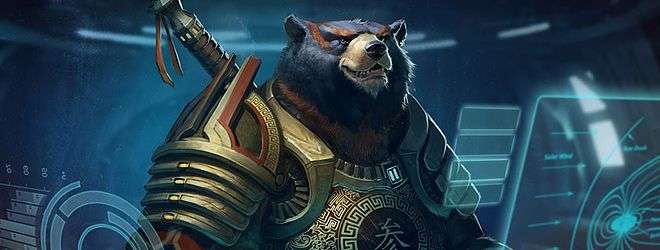
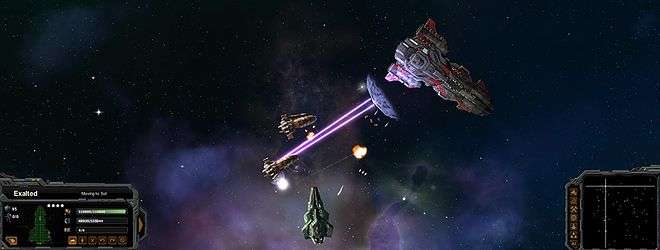
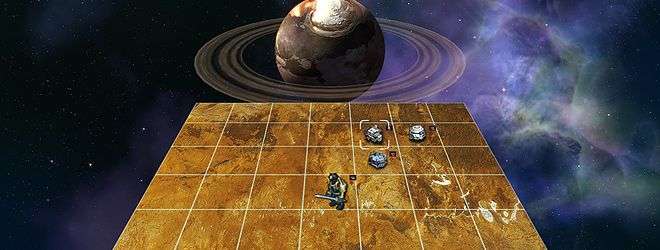






I loved this game. One of the first titles I ever played on the PC was Space Empire 3 or 4 and this seemed like a throw back to that style, something that i’ve not seen since. Like Stu said, there is something missing, it seems like a kind of half finished game, but what is there is incredibly solid. It’s half finished in that it’s missing features, not that it’s broken.
I really hope they add multiplayer to it, or at least some kind of storyline or side missions as you said Stu. For me the big deal with it, was being able to play as the human race as they take to the stars, explore the solar system and the galaxy. Other 4x games give you a human type playable race, but they never let you start at Earth.
I wish SO much that I could play games like this. I’m really not familiar with the genre, so wouldn’t like to say that it IS, but I think that the closest thing I’ve ever come to playing would be Commander: Conquest of The Americas because you have the real-time battles, strategy management, trading, diplomatic relations etc… I’d therefore say it’s quite close to this 4X genre (if not within it)… but they just always look so much more involved when they’re set in space, for some reason.
It sounds like a pretty awesome game, and one that I think I’d love if I could get involved enough. It just comes down to time, really. Maybe I can watch one of you guys playing it sometime to get a feel for it. That’d be cool.
I’ve never really played a 4X space sim before but this looks pretty cool, I might pick this up sometime.
Also, GO SPACE BEARS!
For anyone reading this review with thoughts of purchasing this game:
DON’T
The developer has ceased development, alienated the fanbase, and started work on a 2nd title rather than fixing this one and including the features advertised originally, like multiplayer support.
If you want a Space RTS, look a Sins of a Solar Empire.
If you want a newer solid 4x, look at endless space.
“2pocketknife”
Developer did not cease developement, since yr comment developer made new patches (most recent was made 2 days).
Btw. how can you recommend Endless space (especially with latest expansion) which is buggy with much more serious issues than Stardrive..in more their last working patch is from july..hmm?. In more the whole game is kinda blend…better to load GavCiv II than souless ES.